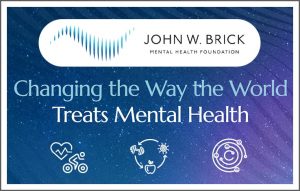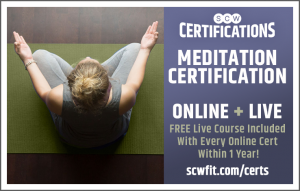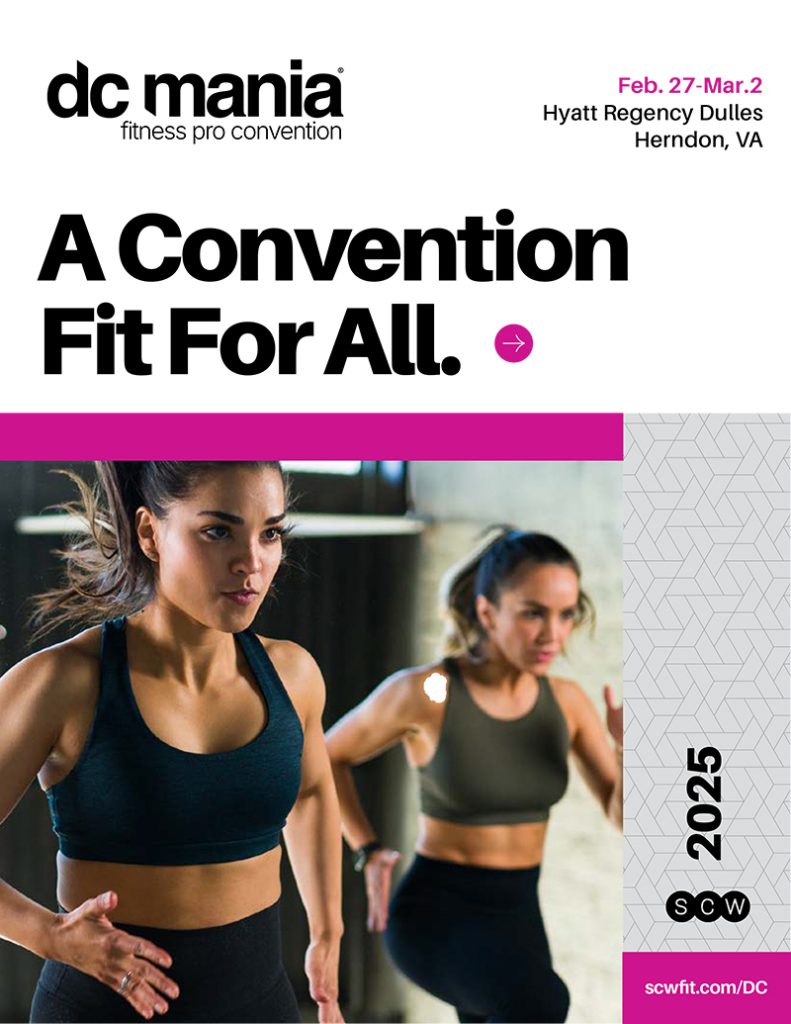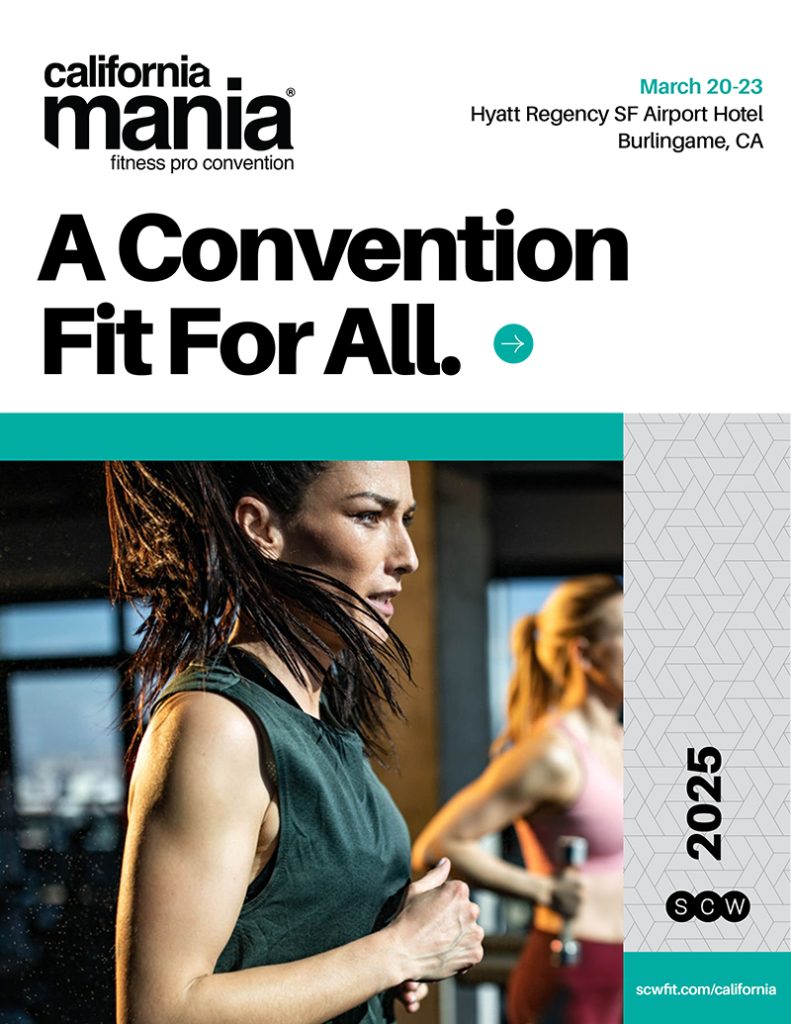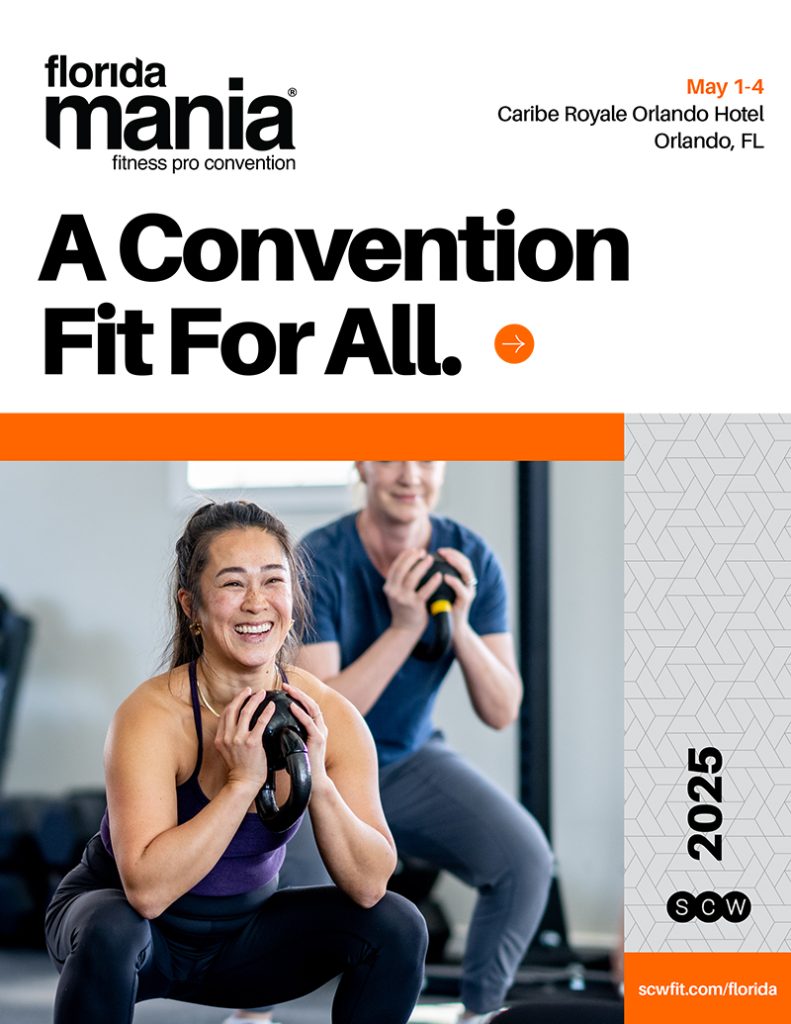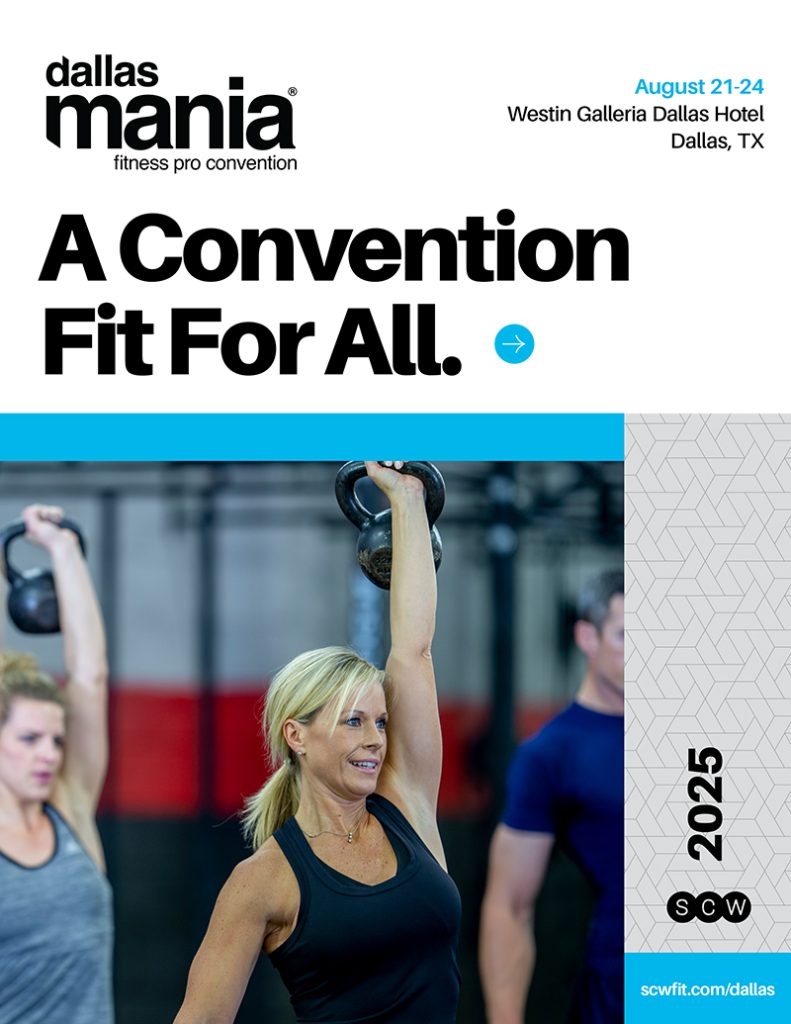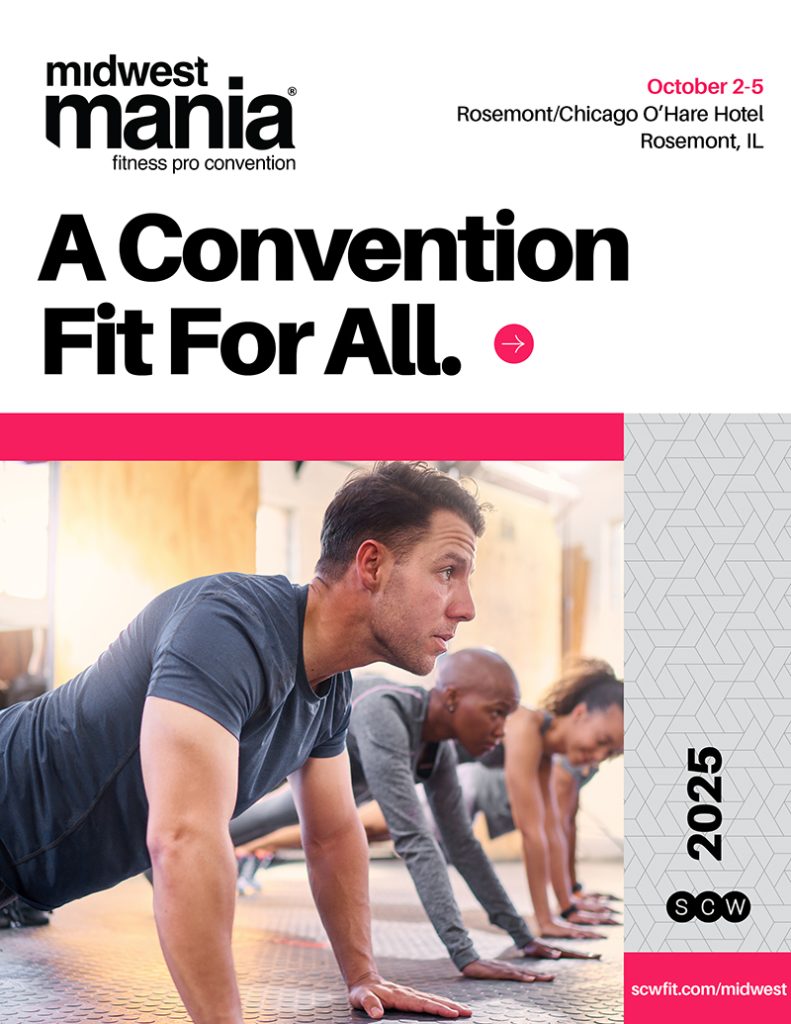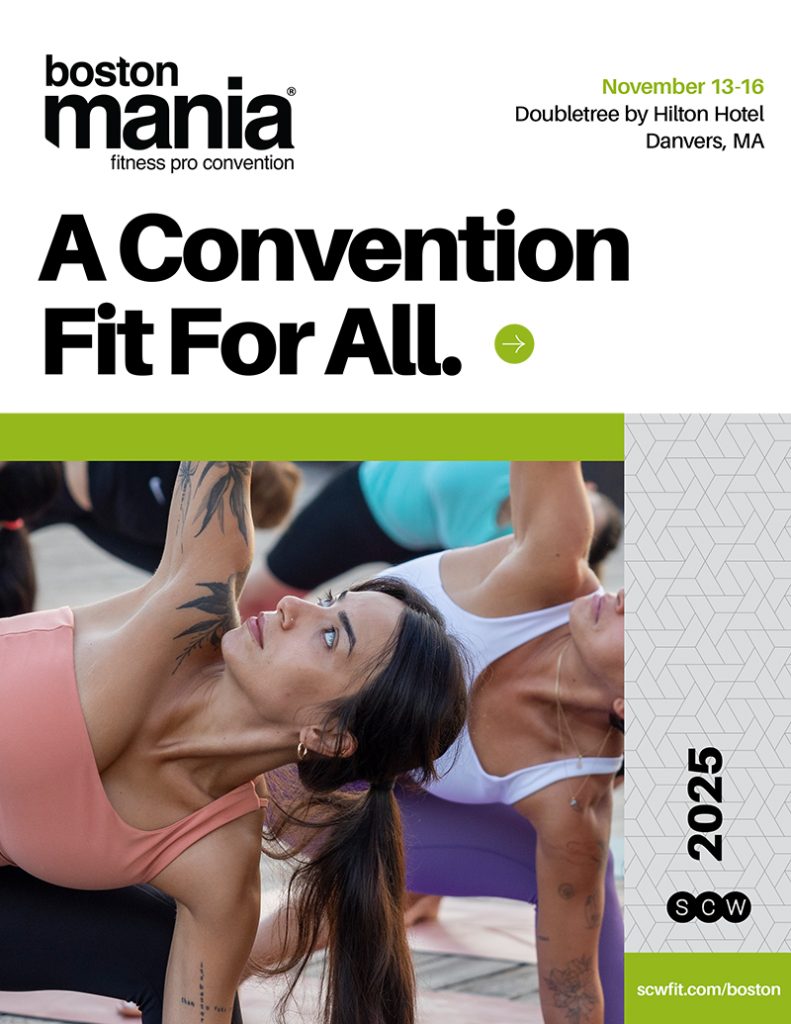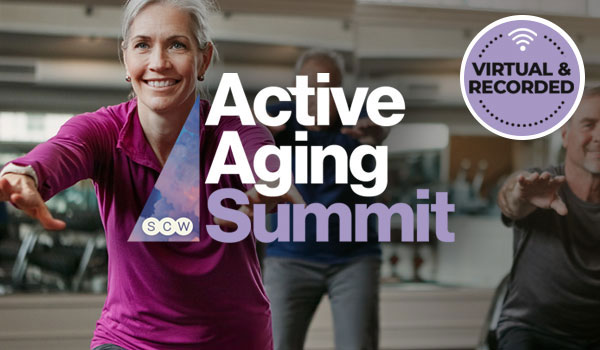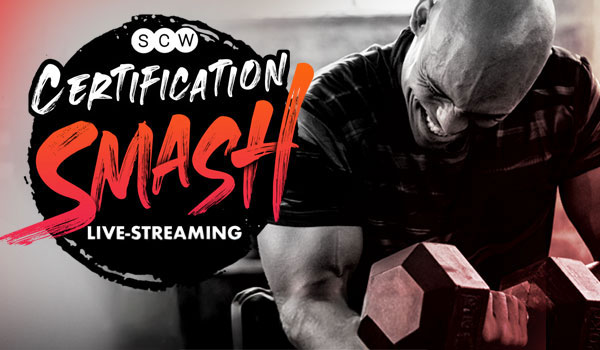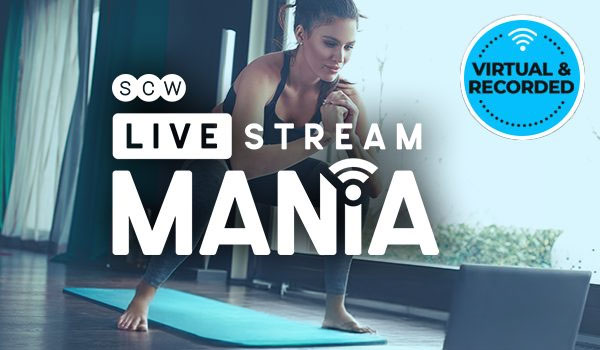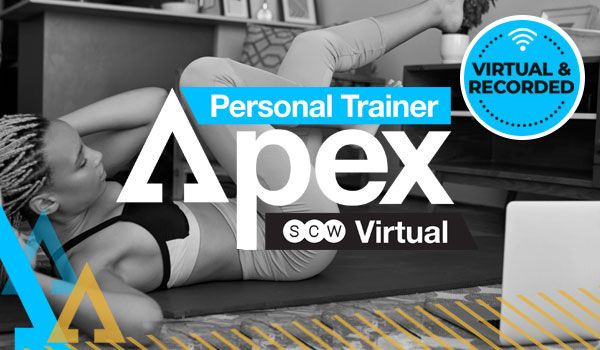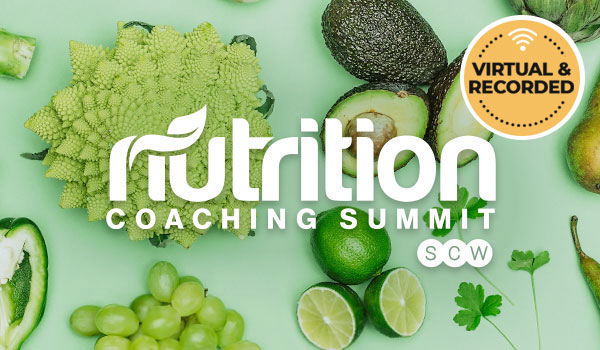
SCW Spotlite: Issue 65
New Fitness Scholarship for Personal Trainers in Memory of Atchara Seesawat | Determination Is All It Takes – Fit For Business | A Focus On Fun | MMM, Feels So Good | Navigating the Winter Blues | Training the Hamstrings for Authentic Function | Food Pairing – Healthy or Hype? | Looking to Hire? SCW Can Help!

New Fitness Scholarship for Personal Trainers in Memory of Atchara Seesawat
Atchara Seesawat was a Personal Trainer and a close, personal friend of Sara Kooperman, CEO of SCW Fitness. Her ability to assess fitness clients through visual review and tactile analysis, along with her deep appreciation and commitment to education and excellence led Atchara to be one of the most sought-after trainers in the North Shore area of Chicago.
During her teenage years, Atchara migrated from Thailand and finished her education in the United States. Like many immigrants, Atchara experienced racism because of her heritage, but due to her core nature of kindness and tolerance she never wavered from her true self and passion. Her dedication to her craft and commitment to excellence and inclusion inspired this SCW Fitness Education Scholarship.
To honor the life and professional career of Atchara Seesawat, SCW is awarding a FREE 3-day registration to an in-person MANIA® Convention for a Personal Trainer who is looking to improve their client experience and expand their ability to help others. This scholarship is available to both experienced individuals or new trainers who strive to maintain the high-quality of personal training and dedication to excellence that Atchara Seesawat demonstrated throughout her life, but does not have the financial means to pay for an educational conference.
This individual must reflect the passion, high-standards, and desire to succeed in the Fitness Industry set forth by Atchara. For more information and to apply for the scholarship visit www.scwfit.com/ATCHARA.
Atchara was a dear friend of Sara’s who passed away all too soon from pancreatic cancer. SCW Fitness is encouraging donations to the American Cancer Society honoring the life and legacy of Atchara Seesawat.
Follow us on IG: https://www.instagram.com/scwmania/
Like our FB page: https://www.facebook.com/scwmania
Follow us on X: https://twitter.com/scw_mania
Connect with us on LinkedIn: https://www.linkedin.com/company/scwfit/

Determination is All it Takes – Fit For Business
Under construction for 10 years, Sara Kooperman, CEO of SCW Fitness, proudly unveils her highly anticipated debut book, Fit For Business: An Unapologetic Look at the Life of a Witty Fitness Entrepreneur.
Learn who Sara is through her candid storytelling, filled with invaluable insights, triumphs, and setbacks, including teetering on the brink of losing everything. She shares the realities of being a leader with the nitty-gritty pitfalls of loneliness, exhaustion, and frustration, along with the highs, rewards, friendships, and family that lift and define her. Not only is this book a personal vision, but the blood, tears, and lots of sweet, sweet sweat experienced through entrepreneurship.
The central message from Fit For Business is that of determination. Sara explains throughout the book; If you want it, you can have it! If you want to be a leader in your field, all you have to do is make the choice, work harder than you ever imagined, and set yourself on a path. All you have to do is make mistakes (plenty of them), get over them, and then get on with it!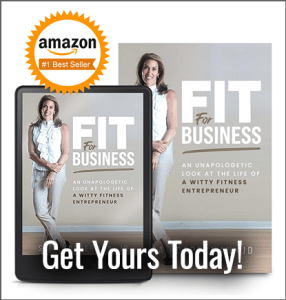
This must read, recounts her life & 40-year business journey mixed with a unique blend of wit, humor, and moments of suspense. (What’s a book without a little suspense?) Sara intricately weaves her experiences, unveiling the challenges and triumphs she encountered as an entrepreneur. The book doesn’t just recount the typical empire-building story—it’s captivating sprinkled with witty anecdotes, offering readers an entertaining yet insightful exploration of the highs and lows that punctuated Sara’s path to success.
If not for Sara’s husband, Alan, this book may not have been written. His devotion and support carried her through the process helping Sara become who she is. “He is my pillar and my pillow. He is strong and soft all at the same time, direct, honest, and brilliant. He has given me my wonderful four sons and a life filled with mountains to climb and moguls to ski.”
Fit For Business: An Unapologetic Look at the Life of a Witty Fitness Entrepreneur is available on Amazon in hardback, paperback, and Kindle e-book formats. Visit https://www.sarakooperman.com/books. For media inquiries or more information, contact editor@scwfit.com. To discover more about SCW Fitness Education, visit www.scwfit.com.
Follow us on IG: https://www.instagram.com/scwmania/
Like our FB page: https://www.facebook.com/scwmania
Follow us on X: https://twitter.com/scw_mania
Connect with us on LinkedIn: https://www.linkedin.com/company/scwfit/

A Focus on Fun
When it comes to fitness, motivation often stems from a myriad of sources. While many may disagree on what motivates them, most will likely agree on the importance of having fun while exercising. Acknowledging that fun, in itself, varies from person to person, offering a variety of options is important in attracting a strong membership base. From the gym floor to the group fitness studio, from personal training to seasonal fitness challenges, members reliably look for motivation that will help them show up consistently. In other words, members are looking for experiences that are positive and enjoyable and a cornerstone to this is having fun.
Novelty in exercise has been shown to improve body composition and fitness in both children1 and adults2. Different individuals experience varying levels of enjoyment while exercising based on their personal preferences as well as the intensity of the exercise(s)3. Offering novelty in fitness programming and ample exercise options can help members find the activity(ies) and intensity option(s) that may ultimately promote long-term adherence. Furthermore, the introduction of new exercises can also promote the acquisition of new skills. With confidence and perceived competence in new skills, exercisers may voluntarily engage in more and/or new future exercise experiences4 and this alone sounds like a whole lot of fun!
Flow Experience
If you’re still on the fence about the importance of new and fun fitness experiences, you may be interested to learn that when performing new exercises, individuals may experience a sense of concentration and absorption that coincides with a suppression of irrelevant thoughts. This experience can result in a deeper engagement known as a flow experience5,6 and may be more likely to occur in the context of novelty, exploration and flexible outcomes7. (Note: Flow experience introduces a new consideration for future discussion, the value of low-pressure fitness options!).
Make it Fun
In efforts to create fun experiences, most managers look first to their group fitness schedules and there’s a good reason for that. Group fitness is an incredible tool for offering exciting, unique, and engaging experiences that also promote a sense of community and belonging. If group fitness programming isn’t a regular topic of conversation, it probably should be. By balancing tried-and-true favorites, like boot camp classes, with one-of-a-kind experiences, like POUND Rockout Workout, facilities can provide something for everyone. Add in regular updates to the group fitness schedule (think new classes, new times, and even pop-up events) and facilities are actively promoting improved member retention. With this, novelty should be considered across all areas of the member experience. Consider changing things up with gym floor equipment selections and layouts (yes, you can move your equipment!), seasonal challenges, voluntary contests, marketing designs, customer service messaging and even seasonal decor throughout the facility. When it comes to keeping things fresh and exciting, a little effort goes a long way; it’s the consistent commitment that’s key.
To help your organization incorporate fun into all that they do, consider starting the conversation with your leadership teams. If management is aligned and committed to fun, they will likely inspire a similar focus in their respective teams with ease, and this can, in turn, can inspire fun across all departments. 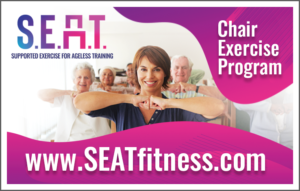
In summary, intrinsic motivation is believed to predict exercise adherence by means of interest and enjoyment8. Novelty can promote both interest and engagement and can be achieved by the introduction of new programming and initiatives as well as unique or unexpected variations that introduce new complexities to existing options and themes9. Aligning on a commitment to fun across all departments holds the potential to realize powerful benefits to your members’ enjoyment and overall health outcomes10 as well as your business’ bottom line. After over a decade of making noise in the group fitness space and in unique venues across the globe, POUNDfit is committed to a future that’s focused on fun! Who’s with us?
About POUNDfit®
POUND® is a cardio jam-session that is inspired by the infectious, energizing fun of playing the drums. In POUND® you don’t just listen to amazing music, you become a part of it with every strike in this exhilarating full-body workout that combines cardio, conditioning, and strength training with yoga and pilates-inspired movements. Using Ripstix®, lightly weighted drumsticks engineered specifically for exercising, POUND® transforms drumming into an incredibly effective way of working out. Designed for all fitness levels, POUND® provides the perfect atmosphere for letting loose, getting energized, toning up and rockin’ out! The workout is easily modifiable, and the alternative vibe and welcoming philosophy appeals to rockstars of all ages and abilities.
Join our family of fitness rebels with $50 off any training using code POUND50SCW*. Visit our site to find a training today! *Code expires January 31, 2024.
Citations
- Liu J., Zhu L., Su Y. (2020). Comparative effectiveness of high-intensity interval training and moderate-intensity continuous training for cardiometabolic risk factors and cardiorespiratory fitness in childhood obesity: a meta-analysis of randomized controlled trials. Front. Physiol. 11, 214–214. 10.3389/fphys.2020.00214
- Wilhelm E. N., Pinto R. S. (2019). Concurrent aerobic and strength training for body composition and health, in Concurrent Aerobic and Strength Training (Springer:), 293–307. 10.1007/978-3-319-75547-2_19
- Ekkekakis P., Brand R. (2019). Affective responses to and automatic affective valuations of physical activity: fifty years of progress on the seminal question in exercise psychology. Psychol. Sport Exerc. 42, 130–137. 10.1016/j.psychsport.2018.12.018
- Green C., Bavelier D. (2009). Exercising your brain: a review of human brain plasticity and training-induced learning. Psychol. Aging 23, 692–701. 10.1037/a0014345
- Csikszentmihalyi M., Csikszentmihalyi I. S. (1992). Optimal Experience: Psychological Studies of Flow in Consciousness. Cambridge: Cambridge University Press.
- Csikszentmihalyi M. (2020). Finding flow: The psychology of engagement with everyday life. London, UK: Hachette UK.
- Swann C., Jackman P. C., Schweickle M. J., Vella S. A. (2019). Optimal experiences in exercise: a qualitative investigation of flow and clutch states. Psychol. Sport Exerc. 40, 87–98. 10.1016/j.psychsport.2018.09.007
- Berlyne D. E. (1970). Novelty, complexity, and hedonic value. Percept. Psychophys. 8, 279–286. 10.3758/BF03212593
- Sylvester B. D., Jackson B., Beauchamp M. R. (2018). The effects of variety and novelty on physical activity and healthy nutritional behaviors. Adv. Motivat. Sci. 5, 169–202. 10.1016/bs.adms.2017.11.001
- Sylvester B. D., Jackson B., Beauchamp M. R. (2018). The effects of variety and novelty on physical activity and healthy nutritional behaviors. Adv. Motivat. Sci. 5, 169–202. 10.1016/bs.adms.2017.11.001
 About the Author: Shannon Roentved
About the Author: Shannon Roentved
Shannon Roentved is the Sr. Director of Pro Success & Education at POUNDfit where she helps lead training, education, and event experiences with her team. Shannon holds a master’s in science in Kinesiology and is an ACE-certified Group Fitness Instructor as well as a Youth and Senior Fitness Specialist. In her career in education and fitness leadership, Shannon has had the opportunity to work in a variety of dynamic settings, including overseeing collegiate wellness programs, serving as an adjunct professor of Physical Education, leading fitness operations for the grand opening of a state-of-the-art municipal recreation center, and providing consulting services for corporate wellness. A lifelong fitness enthusiast, Shannon is grateful to a career that has allowed her to combine her love for exercise with her passion for helping inspire and show care for others through instruction and education.
Follow us on IG: https://www.instagram.com/scwmania/
Like our FB page: https://www.facebook.com/scwmania
Follow us on X: https://twitter.com/scw_mania
Connect with us on LinkedIn: https://www.linkedin.com/company/scwfit/

MMM, Feels So Good
“Oh, that hurt!”
Hearing those words from a client, as they hold their knee or rub their lower back after performing an exercise you recommended, can feel like a “gut punch” to any fitness professional. Our intention, as fitness experts, is to guide our clients towards feeling great about themselves and experiencing movement that makes them feel a decade younger…not causing joint pain or muscle strain.
So, without needing to spend hundreds of thousands of dollars and years of your time and energy going to Physical Therapy school, what can you do to help your clients avoid and even rectify the pains often arising from dysfunctional movement patterns?
The answer is simpler than you might think AND you’re probably already doing it in some ways.
It’s what we like to call: Melt. Mold. Move. (MMM)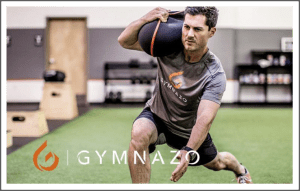
Over the last decade, my team and I have refined this method to make restorative and therapeutic level training accessible and affordable for our clients. The MMM approach evolved from the therapeutic movement strategies we were finding success within our one-on-one training sessions to address complex movement challenges that medical professional in our community found perplexing.
We recognized that this process, which involved an intentional combination of soft tissue work, stretching, and dynamic movement, could prevent the very issues our clients were coming to us for. Imagine having invented the toothbrush and floss, yet no one knew their purpose while suffering from gum pain and tooth sensitivity…that’s kind of what MMM is like. It’s both a preventative and restorative measure.
Once we began offering this new program in a group class format, it quickly gained popularity. Our members began booking more sessions, canceling other restorative programs, and getting all their fitness needs met at our facility, Gymnazo. The MMM program offered an ideal balance for those clients who recognized the benefits of regular stretching and soft tissue work but did not enjoy conventional Yoga and who could not be paid to endure painful foam rolling.
Our Melt. Mold. Move. class has consistently been one of our most attended classes since we started it back in 2017 and we want to share that success with you by giving a detailed outline of how to structure a MMM class, as well as an example MMM session to better understand how to apply this to your clients. Here is a link to download the outline.
And here’s a quick sneak peak of how it works and the intention behind each segment so you can take your clients through this process.
Melt (20 mins): Uses soft tissue work with a foam roller or similar tool to prepare tissues, alleviate muscle and joint pain, enhance range of motion, and facilitate relaxation, leading to improved movement.
Mold (20 mins): Emphasizes lengthening tissues and mobilizing joints in unique positions and deep ranges of motion with a Mobility Stick, improving flexibility, strength, coordination, and athletic performance, while reducing injury risk.
Move (5-10 mins): Develops strength and stability in new ranges of motion and patterns, enhancing body-mind coordination and integrating these new ranges into daily function or athletic performance.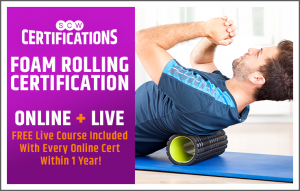
I know what you’re thinking…”Is that all?” Essentially, yes. But the magic lies in the details of what you choose to focus on and why, as well as how you deliver it. While I encourage you to start demonstrating or offering this to your clients immediately, it’s important to pursue an understanding of the nuances of human body mechanics and how small changes can have significant impacts.
If you’re interested in learning more about this method and becoming a local expert, please contact me at mdmc@gymnazo.com. I’d be delighted to discuss how you can gain a deeper understanding of human biomechanics and how to apply it, enabling you to assist your clients and athletes in living more vibrant lives, performing at higher levels, and avoiding injuries.
Or even better, come and meet me in person at SCW DC MANIA®, February 23-25 at the Hyatt Regency Dulles in Herndon, VA, just outside Washington D.C. I’ll be presenting several sessions throughout the 3-day FitPro Convention so you can experience MMM hands on. Register today for only $299 using code YEAREND and save $100. Don’t miss out on not only upscaling your education with over 200 workshops and lectures, but all the networking, shopping, and of course fun!
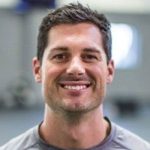 About the Author: Michael Hughes
About the Author: Michael Hughes
Michael Hughes is the founder of Gymnazo & Gymnazo EDU, holding a degree in Kinesiology, Michael is a Fellow of Applied Functional Science and certified as a Multidimensional Movement Coach, a Functional Manual Reaction Coach, a Female Chain Reaction Coach, a 3D Movement Analysis & Performance System Coach, plus several more. He is also a Precision Nutrition Coach and Post Rehab Conditioning specialist. He’s spent the last decade pioneering a more sustainable model of training that blends his heart for restoration with the energy of fitness training. Michael’s mission is to elevate the industry’s standards for what quality looks like as a trainer through scientific knowledge and application.
Follow us on IG: https://www.instagram.com/scwmania/
Like our FB page: https://www.facebook.com/scwmania
Follow us on X: https://twitter.com/scw_mania
Connect with us on LinkedIn: https://www.linkedin.com/company/scwfit/

Navigating the Winter Blues
by Lynne Brick & Cassandra Vieten, PHD
Courtesy of John W Brick Foundation
 About the Author, Lynne Brick
About the Author, Lynne Brick
Lynne Brick, B.S.N, M.A., co-founded the John W. Brick Mental Health Foundation and is also an owner of Brick Bodies Fitness Services, Inc., which owns and operates a chain of health clubs in the Greater Baltimore area. She is the 2004 Ernst and Young Maryland Entrepreneur of the Year and 1990 IDEA (The Association for Fitness Professionals) Instructor of the Year. In 2008 Lynne was the first woman inducted into the Baltimore County Chamber of Commerce Business Hall of Fame.
 About the Author, Cassandra Vieten, PhD
About the Author, Cassandra Vieten, PhD
Cassandra Vieten is Executive Director of the John W. Brick Foundation, Associate Scientist at the University of California, San Diego, and a Senior Fellow at the Institute of Noetic Sciences where she served as President from 2013-2019. She is a licensed clinical psychologist, a mind-body medicine researcher, and author of numerous articles in scientific journals and three books, and an internationally recognized workshop leader and keynote speaker.
Follow us on IG: https://www.instagram.com/scwmania/
Like our FB page: https://www.facebook.com/scwmania
Follow us on X: https://twitter.com/scw_mania
Connect with us on LinkedIn: https://www.linkedin.com/company/scwfit/

Training the Hamstrings for Authentic Function
by Paul Edmondson
Courtesy of Viprfit
The hamstrings, like all other muscles in the body, lack decision-making abilities – without sounding offensive, they are pretty dumb as far as the systems and structures that reside in our bodies go.
What these muscles do, however, is anything but dumb. They lengthen (stretch) and shorten (recoil) in three planes of motion, to support our varied life and sporting endeavours, and to assist the body to create effective and efficient movement and withstand the rigours of a lifetime.
In fitness, we still adopt an isolationist’s view of how muscles do what they do, with each individual component separate from each other, and as such how they must be trained. Isolationists believe that muscles act consciously to cause the bones of the joints they cross to move and, as a result, we have movement. This is the gym way of moving; however, this rarely happens outside the gym.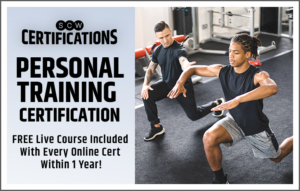
For some 470 years this has been the theory, which was based on cadaver studies in labs looking at electrical stimulation using direct current via the muscle electrolytes. This reinforced this notion for many years.
So, how do we make our training more authentic? The answer lies in nature’s principles – truths of human movement that have been exposed by the world renowned Dr Gary Gray, dubbed the “father of function” in the movement world, at the Gray Institute.
What are these principles – or truths? If we can understand and leverage the truths, then we can create, on demand, the best outcomes for our patients, clients and athletes when it comes to functional hamstring training.
The principles of human movement include, but are not limited to, the following key components:
- ALL muscles operate in 3D. It’s always all three simultaneously. Take the hamstrings: they lengthen in flexion (hip and knee) in the sagittal plane; they lengthen in both directions of the frontal plane with abduction/adduction (hip and knee); they lengthen in both directions in the transverse plane with internal/external rotation (hip and knee). The hamstrings are known for their sagittal plane prowess, but most injuries occur in rotation; therefore, we must train it!
- ALL muscles are turned on via task-specific movements (think reach, squat, step, etc.). Muscles are reactors to movement, NOT actors that cause movement. So, to turn them on authentically, we must do so via motion/tasks that pertain to life/sport/a person’s goal. There’s a great saying – “train movements and muscles will be enhanced; train muscles and movement will be lost” – meaning we must train using tasks to subconsciously stimulate the system (muscles). When you bend to pick something up or walk down the street you never consciously think of activating any muscle. You think “reach down” or “put one foot forward, then the other”. You pray it reacts and controls your motion for you and, because the human sensory/motor system is so intelligent, it does so.
- Muscles work as part of a chain reaction (integrated system). We often isolate muscles to strengthen and stretch, but the truth is this only serves to weaken and dampen their sensory inputs to the body. Muscles are designed to share load/stress across multiple joints/muscles for energy conservation (efficiency), better co-ordinated output of movement, and to pump the system via circulation/nourishment. Isolating a muscle will serve only to isolate stress and, with no friends to share the stress, it will be too easy to exceed those tissues’ load-bearing capacity, which causes said tissue to yield (disrupt, injure).
- Gravity and the ground loads and turn them on. As well as our internal 3D environment (our bodies), they also must navigate our 3D world (physics). Gravity and ground reaction force are the most ubiquitous forces we deal with in life – they are always there. When you are upright/standing (which is life/sport/daily tasks), your foot enters the ground in walking, lunging forward, squatting – the two forces stimulate a reaction within your body whereby bones/joints move. This triggers muscles to react (think back to component number two). As we are talking hamstrings, their job is to decelerate (control) knee flexion, abduction and internal rotation (see component one – it’s always three planes of motion in authentic task-driven actions) and hip flexion, adduction and internal rotation – movement was triggered by the body moving against forces (gravity and ground) and the muscles subconsciously controlled the motion to stop you falling on your posterior (butt). Lying down (prone or supine) confuses the input of gravitational force/load when compared to standing, thus the proprioceptors/muscles will experience different stimuli – therefore, upright must be the preferred position of choice to train for functional transfer.
- Muscles are ‘driven’ to move. Muscles react to motion. In motion, there is an anatomical ‘driver’ that sets in motion a chain reaction event and it’s the job of the muscles to control/stabilise the body. If I take my right hand and reach down and across to the outside of my left at knee height, it will cause my left hip joint to go through flexion, adduction and internal rotation – those hamstring muscles have been significantly lengthened in all three planes of motion, which is the most significant way to stretch and stimulate the hamstrings.
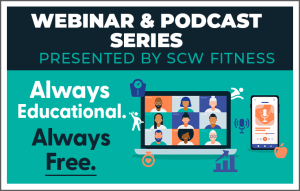 In summary, we must train whole-body integrated, three planes of motion, in upright positioning using task-orientated movements, driven by the hands and/or feet to ensure a proprioceptively rich environment, delivering the most authentic outcome for training the hamstrings to perform optimally, bolster resiliency and defend against injury in our programmes moving forward.
In summary, we must train whole-body integrated, three planes of motion, in upright positioning using task-orientated movements, driven by the hands and/or feet to ensure a proprioceptively rich environment, delivering the most authentic outcome for training the hamstrings to perform optimally, bolster resiliency and defend against injury in our programmes moving forward.
To practically apply this, we will follow a three-step process using Mobility – Stability – Strength to bulletproof your hamstrings for anything life throws your way.
SOLUTION 1: MOBILITY
We should always seek to create space and open good-quality range of motion (in all three planes) to execute motion effectively and efficiently. Side note: the best way to create/expand mobility is to give the body maximum stability.
SOLUTION 2: STABILITY
Once we have opened ranges in motion (mobility), we must teach the body to be able to control/own movements, by taking away stability and allowing the body to explore and control 3D space. If you lack stability/control, your nervous system will guard against those motions when life or sport demands it. If you have stability (control) in motion, you are in motor control, which means you will feel/perceive threat/be locked out of accessing movement via your intelligent nervous system.
SOLUTION 3: STRENGTH
We must load 3D motions (mobility). For our hamstrings to be fully robust/resilient, they must not only possess end range and odd-position mobile abilities, but they must also possess a high-load tolerance, giving us the best chance to mitigate disruption (injury) of the hamstrings in unfamiliar positions/motions. If we train in 3D with this simple three-step programme, then bullet proofing and high performance become the net result.
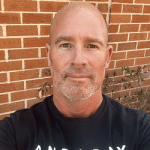 About the Author, Paul Edmondson
About the Author, Paul Edmondson
Paul Edmondson is a dedicated leader within the fitness industry, having worked with, and for some of the leading pioneers and biggest brands in the world both nationally and globally, including Gray Institute, ViPR, Anatomy Trains, Institute of Motion and others. His thought-provoking sessions are designed to bridge the gap between the traditional and new sciences to better equip trainers to serve their unique and individual clients. Paul takes pride in delivering complex content in a simplified manner and is determined to drive those he works with to become “better versions of themselves”
Follow us on IG: https://www.instagram.com/scwmania/
Like our FB page: https://www.facebook.com/scwmania
Follow us on X: https://twitter.com/scw_mania
Connect with us on LinkedIn: https://www.linkedin.com/company/scwfit/

Food Pairing – Healthy or Hype?
by Amanda Fearheiley, RDN, LD, CPT
Pairing foods has been around for quite some time. Think beans and rice or wheat toast and peanut butter—combining these foods ensures you get all of your building blocks to make a complete protein. This science has evolved. We used to promote eating these foods in the same sitting but now research tells us that as long as the foods are eaten within a 24-hour window, you will get all of the essential amino acids.
Let’s dig deeper into more recent food pairings and the science behind it.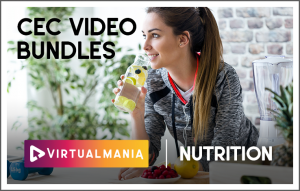
Healthy fats are all the buzz. Eating fat will not only help you feel full and fuel your endurance events, but it is a MUST to help you absorb nutrients. Specific vitamins are fat soluble—vitamins A, D, E, & K plus the carotenoids and Phyto (plant) chemicals associated with that group. Fat is essential to the absorption of these class of vitamins. A, D, E, & K are necessary for regulating mood, assisting in immune function, and decreasing inflammation in the body. Additionally, the phytochemical lycopene (found mainly in red produce) was discovered, and research went on to note that the best way to absorb it was the addition of fat. Lycopene plays a key role in heart health and decreasing the risk of prostate and breast cancer. In short, we need to absorb these vitamins and phytochemicals to keep our bodies healthy.
So, what’s the punch line? Pair healthy fats with vibrant fruits and vegetables to absorb and utilize your vitamins. A green leafy salad with a hefty dose of veggies, some tuna or salmon topped with avocado and drizzled with olive oil would do the trick. When making your marinara sauce, start by sautéing some garlic, onions, maybe even carrots and mushrooms in oil and then add your tomato sauce. Research points towards fat and heat to help us best absorb lycopene.
Another combo you don’t want to miss out on is Vitamin D and foods rich in Calcium. Vitamin D is essential for so many reasons, lung, and immune health top the list. Calcium is a key nutrient for not only bones but also blood pressure and muscle contraction. Vitamin D is essential to calcium absorption. So, what foods can you eat? Well, milk and milk alternatives are fortified with Vitamin D so the calcium can be readily absorbed. Eggs are a staple for many of us. Pair this Vitamin D powerhouse with some yogurt or calcium fortified orange juice to start your day and you are ready to go!!
Let’s talk iron. As athletes it is essential to prevent fatigue and to help deliver oxygen to all parts of our bodies. The best way to absorb iron when it comes from a plant (non-heme) is with a vitamin C source. Most any bright red, yellow or orange fruit or veggie will have vitamin C. A tomato sauce on top of pasta will most definitely help you absorb the iron out of the pasta. Iron in non-meat products (such as fortified grains like pasta and cereals or in your green veggies) need the Vitamin C to covert the iron to a more absorbable form. Cereal topped with strawberries, dried fruit and nuts, and bell peppers sauteed with spinach would all be great combos.
Let’s wrap up with gut health. It’s all the rage right now and for good reason. It is connected to so much of our wellness including mood, inflammation, immunity, and body weight. Pre and probiotics are a necessary component of a healthy gut flora. Prebiotics feed the probiotics. Common prebiotic foods are garlic, onions, leeks, asparagus, bananas and apples. Probiotic foods contain active cultures such as yogurt, kefir, sourdough bread, kimchi and kombucha. Plan your snacks and meals with both sets of these foods. Banana and yogurt or a stir fry that contains asparagus and garlic while sipping on a kombucha. Enjoy some sourdough toast with a side of apples.
These food pairings are just a start to your journey of another level of upping your nutrition game. As a rule of thumb, most snacks or meals should contain 2-3 food groups. Using this rule plus the info you gained above will help keep you optimally fueled.
 About the Author: Amanda Fearheiley, RDN, LD, CPT
About the Author: Amanda Fearheiley, RDN, LD, CPT
Amanda Fearheiley, RDN, LD, CPT has been a registered dietitian for over 20 years and immersed in the fitness field for over 15. She is in private practice, owner, and CEO of AF Nutrition Services, where she empowers her clients of all ages to improve their health through nutrition and movement. In particular, she incorporates food as fuel, food as medicine, and mindful eating approaches. Amanda also teaches group fitness classes that include cycling and strength building. In her spare time, she loves spending time outdoors exploring parks and nature with her husband and three children.
Follow us on IG: https://www.instagram.com/scwmania/
Like our FB page: https://www.facebook.com/scwmania
Follow us on X: https://twitter.com/scw_mania
Connect with us on LinkedIn: https://www.linkedin.com/company/scwfit/
Looking for a New Job? SCW Can Help!
Facilities need you! Whether it’s Teachers, Trainers, Directors, or Managers, SCW’s new FREE JOB BOARD is supporting the industry’s need for qualified fitness pros.
We post openings in all three of our monthly e-newsletters: Spotlite, Health & Fitness Business News, and Tidal Waves which are emailed out to tens of thousands of fitness professionals teaching and training in all formats along with managers and directors at all fitness facilities: big box, gyms, boutique, studios, not for profits and independent centers.
Social Media Assistant
SCW Fitness Education – Remote
This part time virtual Social Media Assistant is responsible for managing the SCW social media for MANIA, WATERinMOTION, SEAT Fitness and Sara Kooperman. This is a 10-20 hour part-time position that is responsible for instagram, facebook, linkedin and tik tok.
Aqua Fitness Instructor
Midtown Athletic Club – Bannockburn, IL
Midtown is searching for Aqua Fitness Instructors to teach and motivate our members to achieve their goals through classes in the Pool at Midtown!
Must have AM availability.
Aqua Instructor
Central YMCA – Arlington, TX
We are looking for passionate certified aqua instructors for our summer outdoor pool classes. The class schedule begins the end of May and runs through early September and the class times are 7:15a and 8:15a.
Exercise Physiologist
Woman’s Center for Wellness – Baton Rouge, LA
Conducts 1-on-1 and group training exercise sessions with cancer survivors, bone health sufferers, and other related diagnoses. Other duties include exercise testing and evaluation, and the development of appropriate exercise programs. Performs other duties assigned by department management. Must be knowledgeable of exercise standards and guidelines established by the ACSM.
Wellness Specialist
Orange County Sheriff’s Office – Orlando, FL
Functions as a trained subject matter expert in the area of fitness and wellness by developing programming and providing instruction, education, coaching and encouraging individuals to adopt personal healthy lifestyle habits and behaviors by performing the following duties.
Group Exercise Instructor
Woman’s Center for Wellness – Baton Rouge, LA
Candidate will instruct fitness classes, such as Yoga, Indoor Cycling, Aqua, Mat Pilates, Zumba, strength training, etc.
Candidate must have group exercise certification, professional liability insurance and CPR/AED required; specialty certification in Yoga, Indoor Cycling, Aqua, REFIT, HIIT, Mat Pilates, Zumba, strength training and/or circuit preferred.
Group Fitness Instructor
F45 Training Longmont – Longmont, CO
We’re looking for personable & high-energy coaches to deliver a top-notch studio experience for our group training HIIT workouts. The people we’re looking for:
- Have a growth mindset and want to be part of a professional team.
- Thrive in a fast-paced environment.
- Come alive in front of a group!
Assistant Director, Fitness
Leonard J. Kaplan Center for Wellness – UNC Greensboro
The Assistant Director, Fitness is responsible for the overall design, management, and implementation of a comprehensive fitness program for the students, faculty, staff and UNC Greensboro community. This includes leadership of two professional positions and a graduate assistant as well as student employees.
 We’re always looking for great content highlighting the newest things in the world of fitness. Please submit your article directly to editor@scwfit.com for immediate consideration!
We’re always looking for great content highlighting the newest things in the world of fitness. Please submit your article directly to editor@scwfit.com for immediate consideration! Spotlite, April 9, 2025
Spotlite, January 5, 2025
Spotlite, November 11, 2024
Spotlite, September 27, 2024
Spotlite, August 31, 2024
Spotlite, July 26, 2024
Spotlite, June 22, 2024
Spotlite, May 23, 2024
Spotlite, April 26, 2024
Spotlite, March 22, 2024
Spotlite, February 19, 2024
Spotlite, January 20, 2024
Spotlite, December 21, 2023
Spotlite, November 18, 2023
Spotlite, October 22, 2023
Spotlite, September 21, 2023
Spotlite, August 19, 2023
Spotlite, July 19, 2023
Spotlite, June 19, 2023
Spotlite, May 18, 2023
Spotlite, April 21, 2023
Spotlite, March 28, 2023
Spotlite, February 18, 2023
Spotlite, January 21, 2023
Spotlite, December 16, 2022
Spotlite, November 19, 2022
Spotlite, October 22, 2022
Spotlite, September 24, 2022
Spotlite, August 23, 2022
Spotlite, July 22, 2022
Spotlite, June 20, 2022
Spotlite, May 18, 2022
Spotlite, April 20, 2022
Spotlite, March 25, 2022
Spotlite, February 17, 2022
Spotlite, January 14, 2022
Spotlite, December 17, 2021
Spotlite, November 18, 2021
Spotlite, October 25, 2021
Spotlite, September 16, 2021
Spotlite, August 9, 2021
Spotlite, July 10, 2021
Spotlite, June 8, 2021
Spotlite, May 14, 2021
Spotlite, April 30, 2021
Spotlite, March 30, 2021
Spotlite, February 23, 2021
Spotlite, January 20, 2021
Hyatt Regency Dulles
Herndon, VA
Hyatt Regency SF Airport
Burlingame, CA
Caribe Royale Orlando
Orlando, FL
May 1-4, 2025
May 2026
Grand Hyatt Atlanta Buckhead
Atlanta, GA
July 24-27, 2025
July 2026
Westin Galleria Dallas
Dallas, TX
August 21-24, 2025
August 28-30 2026
Rosemont Chicago O’Hare
Rosemont, IL
Oct. 2-5, 2025
Oct. 2-4 2026
Doubletree by Hilton
Danvers, MA
Nov. 13-16, 2025
Nov. 13-15, 2026


